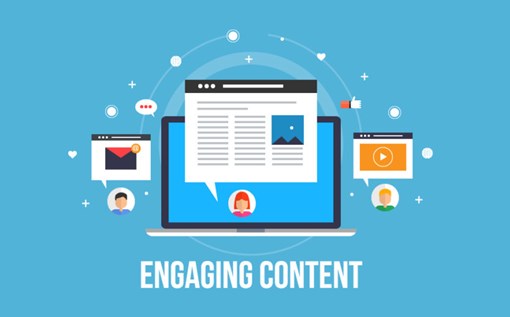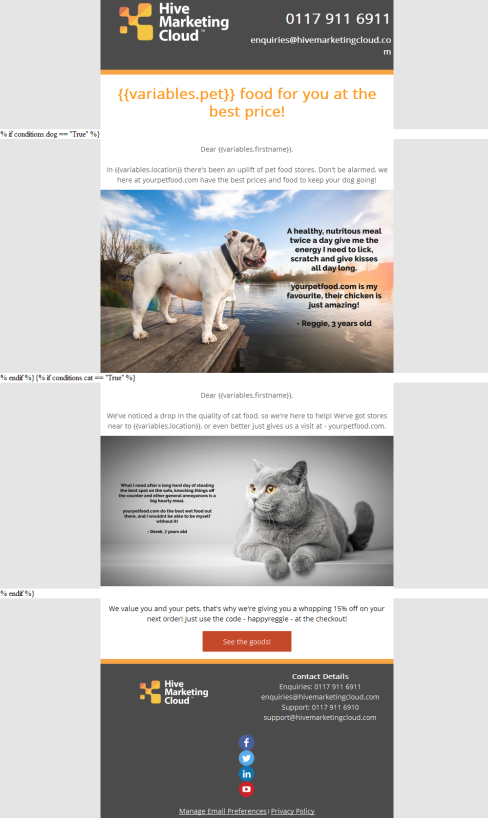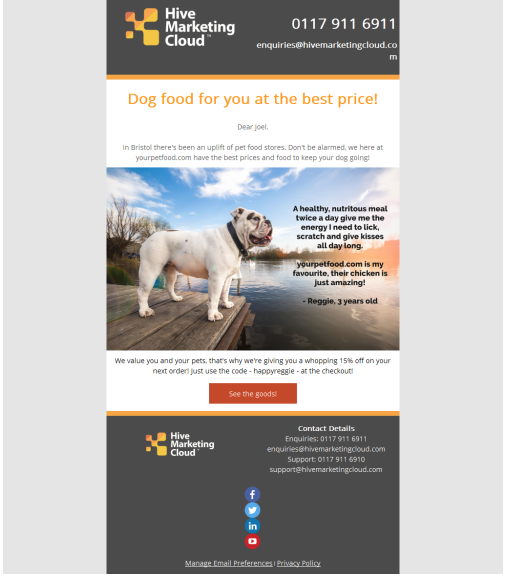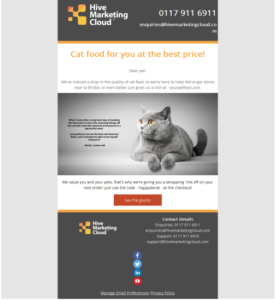How to implement and optimise dynamic content
Jon Mitchell, Chief Technology Officer
Dynamic content is a tool often overlooked or under-utilised by marketers. The capabilities of dynamic content are extensive and will improve your customer relationships considerably.
With features such as easily customisable content blocks, countdown timers and customer-specific information there's real scope to personalise your messaging. But with only 23% of marketers having the capability to provide dynamic content, we can see why you might find it hard to get into and understand.
Well, we can help.
How it works
Dynamic content is applied through variables and conditions that ask questions within your data. For example, if you set a condition of 'cat owner' or 'dog owner' your customer data is interrogated and only the cat owners will be able to see the cat content and vice versa for dog owners.
Varied conditions and variables
The difference between conditions and variables is often a tricky subject for marketers. Conditions affect a whole block of content, whereas variables affect one specific element. For example, if you created two different banners and headers for an email, and then said one version was for men and one was for women, the whole email would be tilted in either direction.
Variables differ, they are more basic and add personalisation to emails. Common variables are your name, title and date of birth. These are used to engage the audience and talk to them as an individual.
Dynamic content in detail
Within dynamic content, you can also do more further customisation by pulling customer-specific information into the email. You can use anything from names to birthdays, even prefilled customer login sections to further personalise your messaging. Here we can see the email in the form when you create it, then what the customer receives:

The code on the left is telling the mail client which sections to select when sending the letter which results in two different emails.


Next level personalisation
We’re beyond the time where inserting someone’s first name into an email is good enough. A message like that won't mean anything to the customer and it won’t stand out in a mailbox. Spreading content with the hope that it’ll resonate with some of your audience isn’t the strategy to employ either. Creating a 1-2-1 conversation is what consumers crave, and what they need. And, it makes you stand out.
Think about it, who do you remember more, the person who served you at the supermarket or the guy stacking the shelves? A mailbox is similar to this. There are brands you engage with and remember, and brands who might have served you well but you can't remember how you ever got on the mailing list. These forgettable emails you skip past, or delete.
Follow the metrics
Look at your current metrics, see how you’re getting on. Look at your open rates, click-throughs and how many times your call to action is being taken. This gives you a solid indication of how your consumers are reacting, and the opportunity to build.
Concentrate on the relevance of your email, reduce the size of each segment if necessary and split into more targeted emails. Not only will your metrics rise for the original segments, but the people who would’ve been missed are now being reached.
Direct communication
A message that speaks to the consumer as an individual is the correct message, and dynamic content does all the hard work. It applies all the features you want, without you having to do it manually for each consumer.
About the Author

Jon is the co-founder and Chief Technology Officer at Hive. He has over 20 years experience in software development, with the majority of that focused on creating fit for purpose Marketing solutions, with companies such as Occam, Alterian and Experian. From architecture and design, development and testing, to deployment and cloud hosting, Jon leads our R&D team to ensure that clients and end-users can put their trust in our Hive Marketing Cloud platform.
Connect with Jon on LinkedIn.
Articles
This is what we're talking about




NEWS: Award-Winning Ski Operator, Peak Retreats, Elevates Customer Engagement with Hive Marketing Cloud


